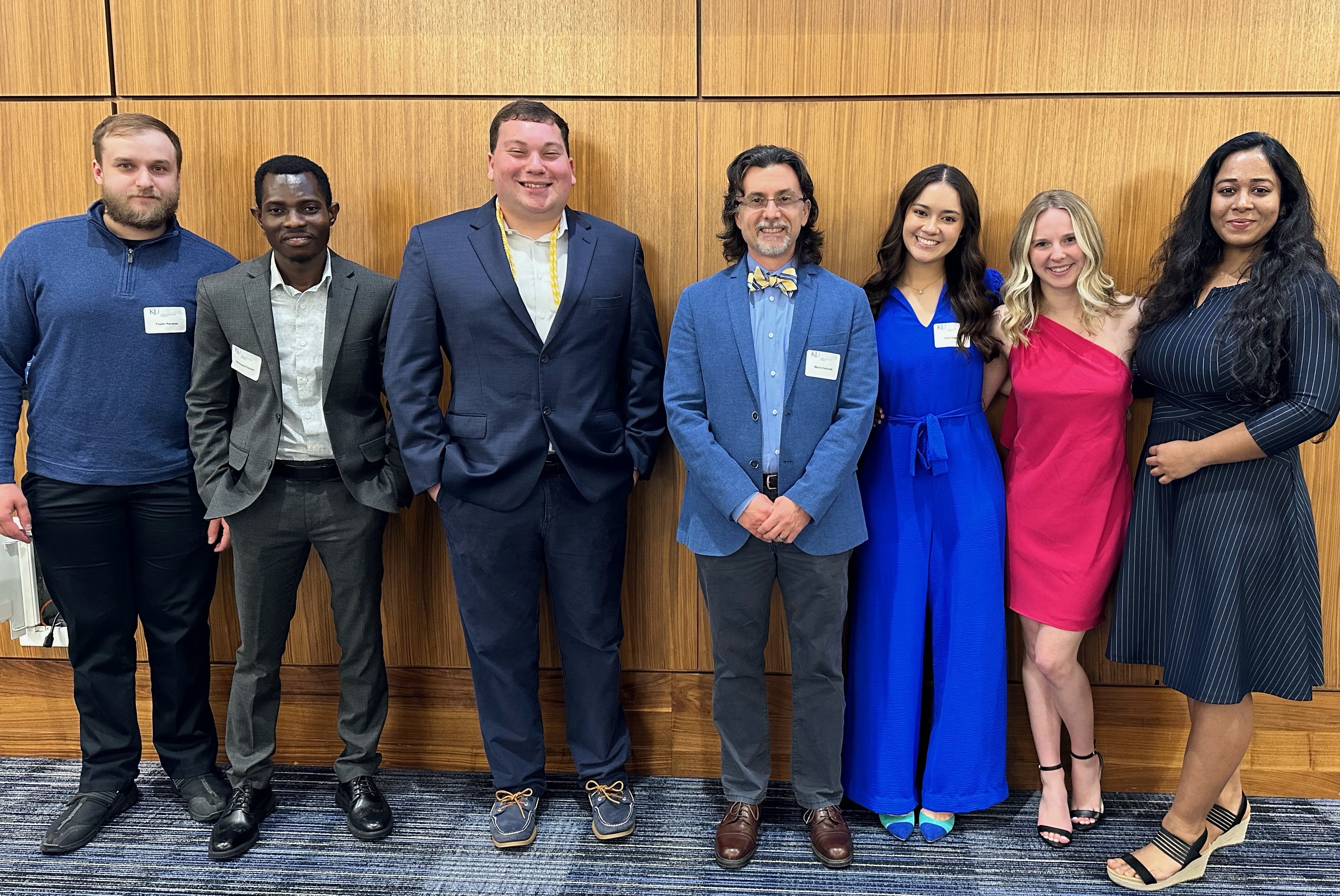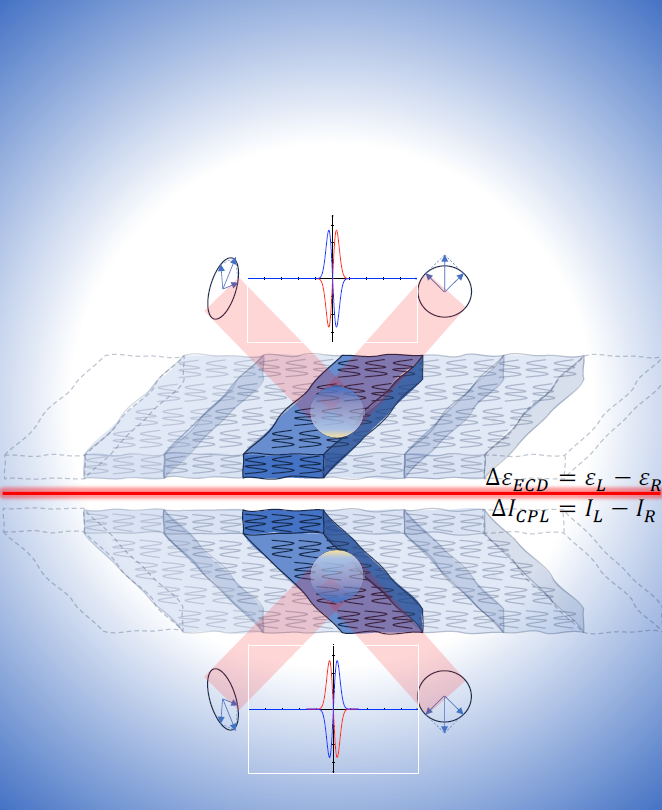Professor Marco Caricato named April 2024 Walter and Roy Cross Professional Service Award recipient

Caricato Group, May 2024. From left: Taylor Parsons, Emmanuel Forson, Brian Faintich, Marco Caricato, Jiani Osborn, Eden Brenneman, and Shreyaa Brahmachari.
The Department of Chemistry congratulates Professor Marco Caricato on receiving the April 2024 Walter and Roy Cross Professional Service Award!
The Walter and Roy Cross Professional Service Award is a monthly competition among chemistry faculty. Every month, the Chemistry Department Chair and Associate Chairs review the peer-reviewed papers published by chemistry faculty from the three previous months to select a winner. The recipient receives a $1000 cash prize and is featured on the departmental website.
For a full list of winners, visit our Walter and Roy Cross Professional Service Award webpage.
A Perspective on the Simulation of Electronic Circular Dichroism and Circularly Polarized Luminescence Spectra in Chiral Solid Materials
By Marco Caricato
Published in Journal of Physical Chemistry A 2024, 128, 7, 1197-1206
https://doi.org/10.1021/acs.jpca.3c08095
Chiral materials have shown tremendous potential for many technological applications, such as optoelectronics, sensing, magnetism, information technology, and imaging. Characterization of these materials is mostly based on chiroptical spectroscopies, such as electronic circular dichroism (ECD) and circularly polarized luminescence (CPL). These experimental measurements would greatly benefit from theoretical simulations for interpretation of the spectra as well as predictions on new materials. While ECD and CPL simulations are well established for molecular systems, they are not for materials. In this Perspective, we describe the theoretical quantities necessary to simulate ECD and CPL spectra in oriented systems. Then, we discuss the approximate strategies currently used to perform these calculations, what computational machinery is already available to develop more general approaches, and some of the open challenges for the simulation of ECD and CPL spectra in solid materials. When methods that are as reliable and computationally efficient as those for molecules are developed, these simulations will provide invaluable insight and guidance for the rational design of optically active materials.

Figure 1. Abstract Figure